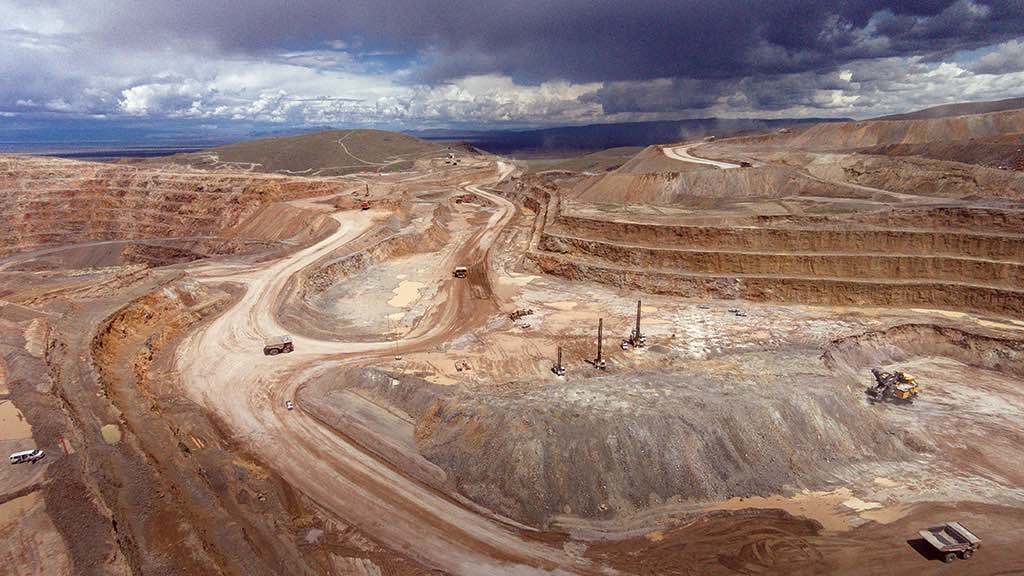Press Release: 2nd February 2021
In 2020 air pollution caused by the activity of miners was again a major industry talking point across Australia as new state government legislation was implemented in the wake of stories linking poor air quality in communities situated close to mine sites.
This combined with recent events in Western Australia that saw monitoring failures and excessive levels of particulate reported in the media has again put the focus on suppressing dust at its source to reduce the potential of harm for workers and mining communities.
For Australian headquartered mining and civil services firm Global Road Technology (GRT), these incidents and the real danger that high levels of airborne particulates pose for people exposed, emphasise the importance of a comprehensive and holistic approach to dust suppression.
GRT General Manager, Daniel Grundy believes that prioritisation needs to be placed on implementing the most advanced dust suppression products and services at the very source of the pollution – as any incidence of air pollution having negative effects on mining communities jeopardises the social and environmental licence the miners have – in addition to potentially forcing governments to tighten legislation even further.
Are environmental regulations, health and safety concerns or potential profit loss a concern right now?
“It is known that long-term exposure to high levels of dust pollution can place extra load on the body with a particular impact on the respiratory system and that some people who live within areas that are impacted by high pollution face a higher probability of having cardiopulmonary damage and disease,” said Mr Grundy.
“That’s why mitigation is so critical, the focus needing to be on controlling/eliminating dust by engineering controls at the point of generation to capture dust at its starting point to help in eliminating the hazard – we utilise the latest dust suppression technology developed in our purpose-built manufacturing facility, tailored engineering techniques and combine this with ongoing monitoring and data collection via ‘Internet of Things’ (IoT) devices. Onsite expert monitoring and advice on overall processes combined with the above allows us to quantify the reduction of the immediate hazard and ensuring we can continue monitoring the site in real-time to act on any changes in environmental or operational conditions that may require a chance in tactics.”
Australia’s arid conditions – particularly in the parts of the country that is home to much of its mining activity – exacerbate the problem as the lack of rainfall allows the dust to spread from the site much more quickly and can rapidly increase the dust particulate levels above the recommended amounts. The country’s mining sector is aware of the scale of the issue with BHP alone planning to spend $300 million over the next five years across its Pilbara operations in an attempt to reduce the impact its operations have on the local communities.

Some experts see this expenditure as critical as for the miners to operate in a socially responsible manner in relation to how they impact the communities that exist close by.
For Daniel Grundy, the ongoing controversy around the impacts of mining on the health of workers and communities validates the investment the firm has made from an R&D perspective in range of innovative chemical additives and associated hardware designed specifically for managing and containing dust to protect workers on mining sites and nearby residents and landholders from airborne dust pollution and disease.
“Our products and services are designed for the purpose of reducing the impact of airborne dust on people and operations,” Mr Grundy said.
“These products and their applications are guided by the GRT approach that is based around understanding the risk, and controlling or even eliminating dust by engineering controls at the point of generation. We have developed a specific range of products including the GRT: Haul-Loc, GRT: Activate, GRT: Ore-Loc, and GRT: Wet-Loc that adhere to these principles of either controlling the release of the dust or stopping its spread from the point of generation that require a holistic, whole-of-site approach to ensure maximum effectiveness and to protect the health of workers and communities.”
Your feedback is important to us. If you enjoyed reading this Global Road Technology industry update and found it informative, please let us know by leaving a REVIEW.
Source: Australian Mine Safety Journal
Troy Adams
Troy Adams is the Managing Director of Global Road Technology (GRT) Specialising in Engineered Solutions for Dust Suppression, Erosion Control, Soil Stabilisation and Water Management. A pioneering, socially conscious Australian entrepreneur, Troy Adams is passionate about health and safety and providing innovative solutions that are cost-effective to the mining industry, governments and infrastructure sectors. Troy is also a tech investor, director of companies like Crossware, Boost, Hakkasan, Novikov and more.
MORE INDUSTRY ARTICLES
Nothing found.